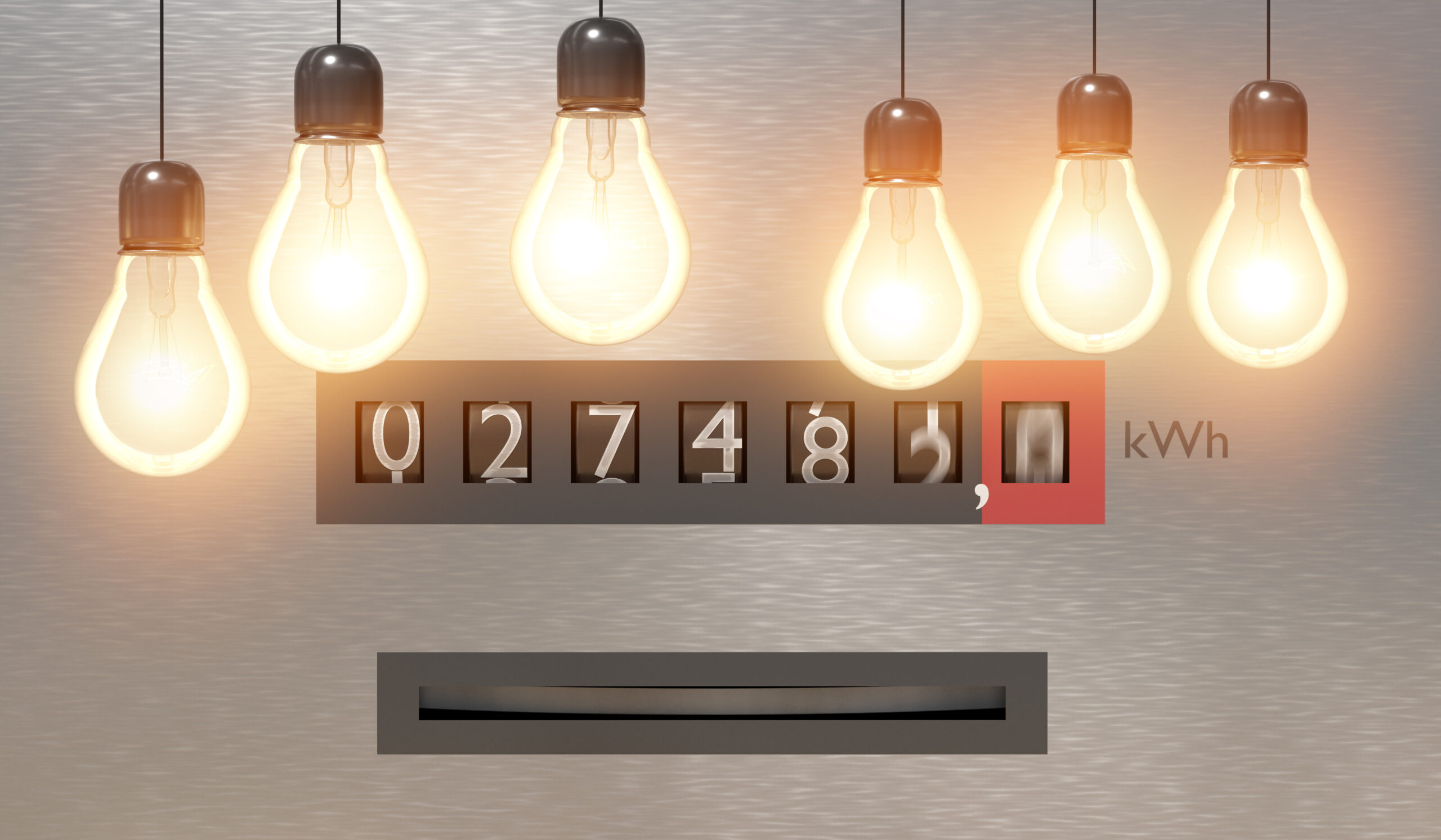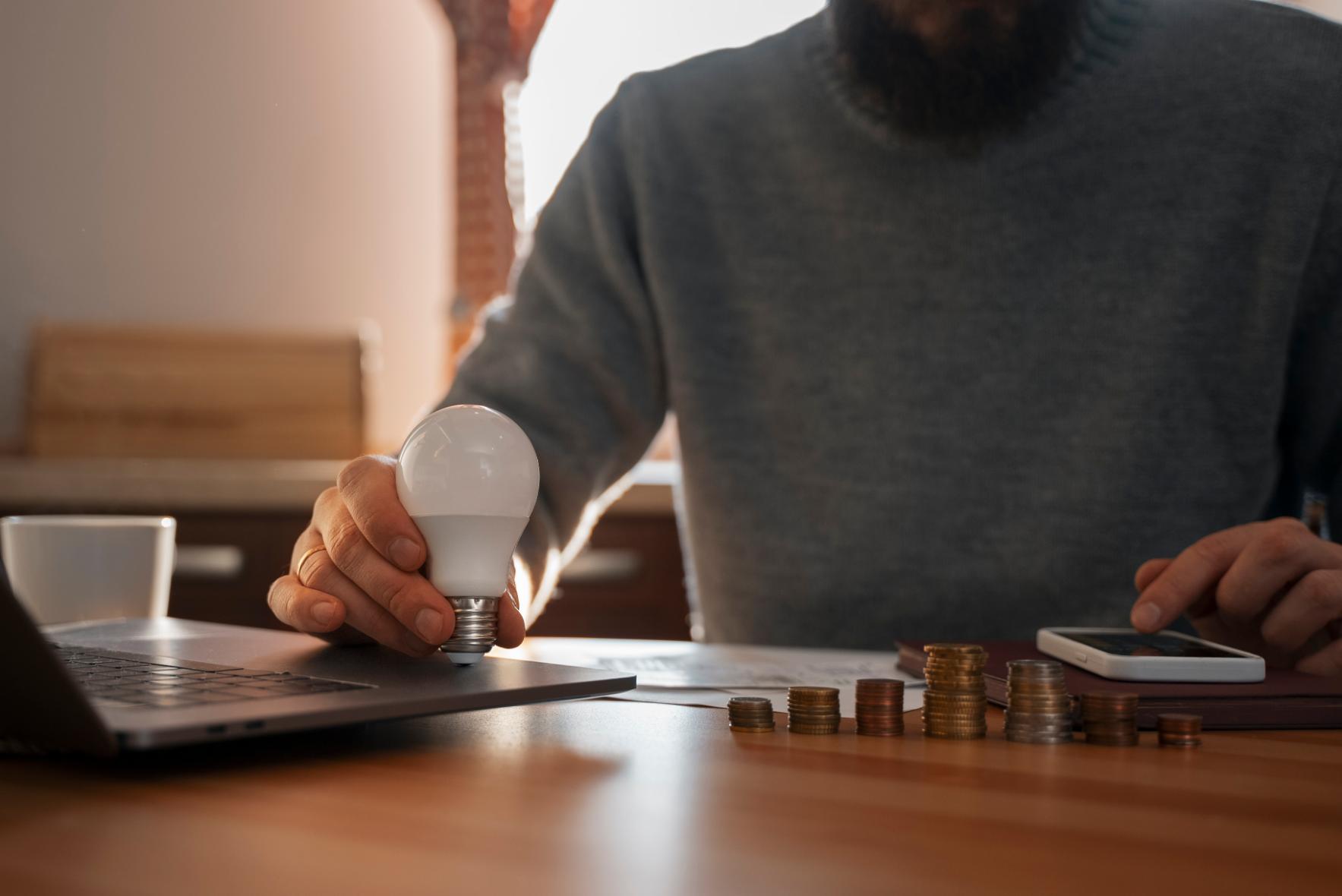Do you ever find yourself staring at your electricity bill and wondering “What is a kWh and how did I use so many of them!?” Understanding how electricity is measured will help you decipher your bill and avoid the dreaded bill shock.
A Watt
Electricity is measured in watts (w) – the more watts you use, the more electricity has been consumed. You can see how many watts your electrical appliances use by looking at their watt rating, which is found on most household appliances on a sticker attached to the appliance or in its instruction manual.

This sticker indicates the number of watts, ie. the amount of electrical power, the appliance needs to operate correctly. Where a range is shown, this may indicate that the appliance uses a different amount of electricity for different settings, for example, your fridge will use more watts when it is set to cooler temperatures. If you’re trying to calculate the wattage your house uses, take the higher number in the range to give yourself the maximum usage and avoid underestimating your bill. Other variations in watt usage might be highlighted in your appliance’s manual, such as different electricity consumption for different cycles in a washing machine or different modes on an air conditioner.
Calculating Watts
Once you know the number of watts an appliance uses, simply multiply the watts by the duration of its usage to find out the total amount of electricity that has been used. For appliances that are always on, like fridges and freezers, you can use the length of your bill cycle (usually 3 months).
Watts x hours used = total electricity consumption
Being aware of this total consumption can help you cut down and make savings on appliances that are using the most watts. For example, if you have an electric hot water system, using the timer function rather than running it all the time can drastically reduce the ‘hours used’.
The Kilowatt-Hour (kWh)
On your electricity bill, under ‘Total Usage’ you will see the number of kilowatt-hours you have used in that particular billing period.
Now that you know how many watts your appliances are using, there are two steps to convert these into kWh:
- Calculate the watt-hour
To calculate the watt-hour of an appliance, the number of watts expended over one hour is used. For example, a 150-watt refrigerator turned on for one hour will use 150 watt-hours of electricity, so over the course of a 12 hour day, it will use 1,800 watt-hours.
- Calculate the kilowatt-hour
Kilowatt-hours are simply 1000 watt-hours, so to determine an appliance’s kWh, just divide the watt-hours by 1,000.
Watt-hours / 1000 = Kilowatt-hour (kWh)
So for our refrigerator example:
1,800-Wh / 1000 = 1.8 kWh used to run a 150-watt refrigerator for 12 hours
How Many kWh Am I Using?
The number of kWh used per day varies between households and depends on the following factors: number and type of electrical appliances used, hours per day usage, the energy efficiency of the appliances and the season.

In Australia, the average daily electricity consumption is 17 kWh. (It’s worth noting here that an average 5kW solar system can produce up to 20 kWh) (Choice).
You can find out how much you are using by looking at the ‘Total Usage’ column on your bill. Most bills will also show you a comparison to your usage at the same time in the previous year, and also to the average consumption in your area, so you can judge if you are a high or low energy user.
If you want to dig deeper, you can calculate the amount of kWh each of your appliances are using by following the method above. This can be a really great way to uncover if you are using too much electricity on certain household items.
As a guide, some examples of average electricity usage for common appliances are:
| Appliance | Watt rating | Hours used | kWh per day |
| Air conditioning | 1,200 | 6 | 7.2 |
| Hot water | 3,600 | 2 | 7.2 |
| Refrigerator/Freezer | 150 | 12 | 1.8 |
| Television | 200 | 5 | 1 |
| Kettle | 2,400 | 0.1 | 0.24 |
| Phone Charger | 15 | 10 (2 chargers) | 0.15 |
| Washing Machine | 2,400 | 1 | 2.4 |
Can I Track How Much Electricity My Home or Business is Using?
If reading this has inspired you to delve into your electricity usage, you can measure your daily usage by looking at your electricity meter. If you notice there are certain days that your electricity consumption leaps up, you might be able to avoid these spikes in the future. If you have a smart meter installed, then you probably already have an in-home display unit and/or web portal to track your usage on a daily, weekly, monthly and quarterly basis. If you’re not sure which type of meter you have, contact us or call your energy provider.
How Much Does A kWh Cost?
The cost of a kWh is shown on your bill as a ‘charge’ or ‘rate’. Depending on your plan, you might see different rates for on and off-peak, seasonal and a buy-back or feed-in tariff for solar.

There are numerous electricity retailers on the market, each with different rates and deals. The rate you’re eligible for depends on a number of factors including the area you live in, your usage habits (if you need to use more on or off-peak electricity), the DMO/VDO (the government’s reference price for energy), if you are a new or existing customer (this can often make you eligible for special offers) and if you are looking for a business or residential plan.
The rates on offer from retailers are not static, and most electricity providers will regularly release new special offers and limited-time deals. We highly recommend reviewing your electricity plan every 12 months to make sure you’re still getting the best deal for your unique needs and budget. You can do this with one quick and easy phone call to CheapBills on 1300 786 045 or by entering your details here.








